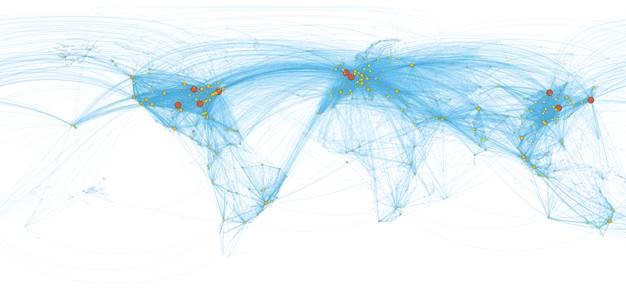Montréal, 25 September 2017 – Aviation is essential to the economic development of cities, countries and regions everywhere, but governments can only optimize its benefits by addressing the sector’s critical infrastructure and resource needs in their national development strategies.
That’s one of the key messages being conveyed jointly by ICAO and international aviation’s most prominent organizations in a special new 2017 report just released on Aviation Benefits.

The new Aviation Benefits report, aimed mainly at government Ministers and national planners, contains a summarized checklist of the steps to be taken to maximize air transport’s socio-economic influence. It presents helpful overviews of the related investment and partnership priorities to be pursued, as well as comprehensive regional summaries showing how aviation is improving prosperity all over the world. Its release comes just before World Tourism Day on 27 September 2017, helping to underscore the symbiotic links between positive tourism impacts and the level of aviation connectivity established in a given city or territory.
“Well over a billion tourists are crossing international borders each year,” remarked ICAO Secretary General Dr. Fang Liu, “and over half of these are travelling by air to their destinations – in fact over 80% in many island States. Aircraft also transport some 35% of world trade by value, and the lowering costs and expanding routes across our network mean that the economic benefits from tourism and other aviation connectivity impacts will only increase in the years ahead. This trend is further reinforced by the dramatic forecasts we’re seeing for future air traffic growth.”
The report also provides a comprehensive outline of how international aviation connectivity directly aids governments’ ongoing efforts to achieve 15 of the 17 United Nations Sustainable Development Goals adopted under Agenda 2030.
“ICAO works hard to foster effective partnerships between donors, investors and needful States, and to assist governments in developing solid business cases with clearly defined returns for their major air transport development projects,” Dr. Liu added. “We have mapped out how well-supported air services greatly aid governments in attaining 15 of the 17 UN SDGs, and this report helps to reinforce for Ministers and government planners everywhere the importance of integrating their aviation development needs into their broader national development strategies.”
The publication is an outcome of the joint work of the Industry High Level Group (IHLG), led by ICAO Secretary General, Dr. Fang Liu, International Air Transport Association (IATA) Director General and CEO, Alexandre de Juniac, Airports Council International (ACI) Director General, Angela Gittens, Civil Air Navigation Services Organisation (CANSO) Director General, Jeff Poole, and International Coordinating Council of Aerospace Industries Associations (ICCAIA) Chairman, Jan Pie.
As the UN agency for aviation, ICAO directly supports these partnership and project planning priorities each year during its high-level ICAO World Aviation Forums, the next edition of which will be held late November in Abuja, Nigeria.
About ICAO
A specialized agency of the United Nations, ICAO was created in 1944 to promote the safe and orderly development of international civil aviation throughout the world. It sets standards and regulations necessary for aviation safety, security, efficiency, capacity and environmental protection, amongst many other priorities. The Organization serves as the forum for cooperation in all fields of civil aviation among its 191 Member States.
